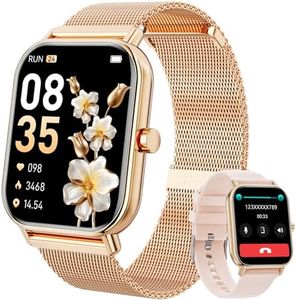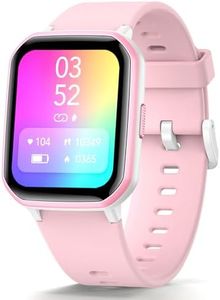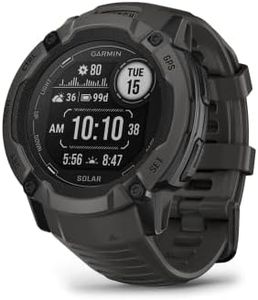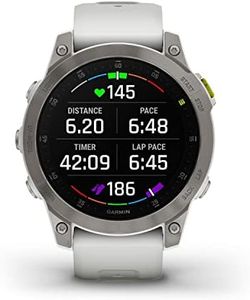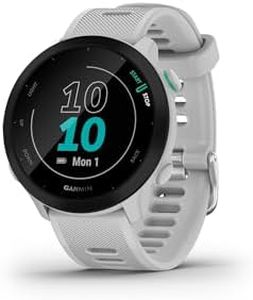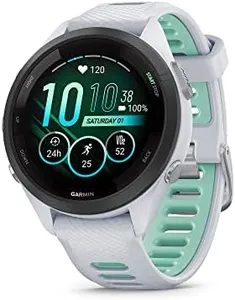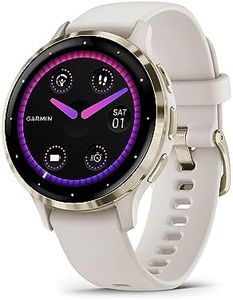10 Best Garmin Heart Rate Monitor Watches 2025 in the United States
Our technology thoroughly searches through the online shopping world, reviewing hundreds of sites. We then process and analyze this information, updating in real-time to bring you the latest top-rated products. This way, you always get the best and most current options available.

Our Top Picks
Winner
Garmin vívoactive 5, Health and Fitness GPS Smartwatch, AMOLED Display, Up to 11 Days of Battery, Black
The Garmin vívoactive 5 is a versatile health and fitness smartwatch featuring a vivid AMOLED display and impressive battery life of up to 11 days in smartwatch mode. It excels in heart rate monitoring, making it ideal for users who want to keep track of their cardiovascular health. The watch also offers extensive GPS tracking, beneficial for outdoor enthusiasts who enjoy activities like running, cycling, and hiking.
It's well-suited for fitness enthusiasts with more than 30 built-in sports apps, and special modes for wheelchair users, ensuring inclusivity. The vívoactive 5 provides comprehensive health monitoring, including sleep tracking, stress levels, and Body Battery energy monitoring, which offers personalized insights to help users manage their wellbeing effectively. Additionally, it supports smart features like music downloading, notifications, and Bluetooth connectivity, enhancing convenience.
The design is sleek and comfortable, with a lightweight build and a round, 1.2-inch AMOLED touchscreen that is both responsive and easy to read. However, some users might find the screen size a bit small compared to other smartwatches on the market. The water resistance makes it suitable for swimming, but those looking for more advanced swimming metrics might find it lacking. The smartwatch is compatible with both Android and iOS, ensuring broad accessibility. While it has a decent storage capacity of 4 GB, heavy music and app users might find this limiting. The Garmin vívoactive 5 is a solid choice for those looking to improve their fitness and health tracking with a stylish and functional smartwatch.
Customer Highlights
A summary of real customer reviews to highlight what shoppers are saying!Garmin 010-02638-10 Forerunner® 955, GPS Running Smartwatch, Tailored to Triathletes, Long-Lasting Battery, Black
The Garmin Forerunner 955 is a strong contender for triathletes and runners seeking a comprehensive smartwatch. Its standout features include highly accurate heart rate monitoring and GPS tracking, bolstered by access to multiple global navigation satellite systems. This ensures precise tracking even in challenging environments. The long-lasting battery life is impressive, offering up to 15 days in smartwatch mode and up to 80 hours in UltraTrac mode, making it reliable for extended use.
Additionally, the watch's water resistance makes it suitable for various activities, including swimming. The device also offers extensive activity tracking and smart features like training readiness scores and personalized workouts, which are particularly useful for serious athletes. However, it might be overkill for casual users who don't need all the advanced training metrics.
The design is both functional and comfortable, featuring an always-on, full-color display that is easy to read even in direct sunlight. The touchscreen, combined with traditional button controls, provides flexible navigation options. One downside is the lack of audio output, which means no music playing capabilities directly from the watch. Moreover, its specialized features might come with a steep learning curve for those less familiar with advanced fitness tracking devices. In summary, the Forerunner 955 is well-suited for dedicated athletes looking for a robust, multifaceted smartwatch to enhance their training and performance.
Customer Highlights
A summary of real customer reviews to highlight what shoppers are saying!Garmin 010-02626-10 Instinct 2, Rugged Outdoor Watch with GPS, Built for All Elements, Multi-GNSS Support, Tracback Routing and More, graphite
The Garmin 010-02626-10 Instinct 2 is a rugged outdoor watch designed to withstand harsh conditions. It is water-resistant up to 100 meters and built with a fiber-reinforced polymer case and scratch-resistant Corning Gorilla glass, making it suitable for various outdoor activities like swimming, hiking, and camping. The watch offers excellent battery life, lasting up to 28 days in smartwatch mode and up to 30 hours in GPS mode, which is great for extended outdoor adventures.
GPS tracking is supported by multiple global navigation satellite systems (GPS, GLONASS, and Galileo), ensuring accurate location tracking even in challenging environments. Additionally, the built-in 3-axis compass and barometric altimeter provide useful navigation aids. Heart rate monitoring is a key feature of this watch, alongside other health metrics like sleep, Pulse Ox, and respiration tracking. These features help users understand their physical condition and activity levels better, although it is important to note that this device is not a medical tool. The Instinct 2 also includes various sports apps for running, biking, swimming, and more, along with training features like VO2 max measurement.
Smart features include notifications and compatibility with the Garmin Connect IQ platform when paired with a smartphone, enhancing the user experience. The watch's design is practical with a 1.12-inch screen and button interface, which might not appeal to users looking for a more modern touch-screen experience. Also, some users may find the rugged design less stylish for everyday wear. Despite these minor drawbacks, the Garmin Instinct 2 is a solid choice for outdoor enthusiasts and fitness-focused individuals looking for a durable, feature-rich smartwatch.
Customer Highlights
A summary of real customer reviews to highlight what shoppers are saying!Buying Guide for the Best Garmin Heart Rate Monitor Watches
Choosing the right Garmin heart rate monitor watch can significantly enhance your fitness journey by providing accurate data and insights. To make an informed decision, it's essential to understand the key specifications and how they align with your personal fitness goals and lifestyle. Here are the main specs to consider when selecting a Garmin heart rate monitor watch.FAQ
Most Popular Categories Right Now
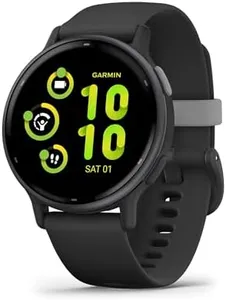
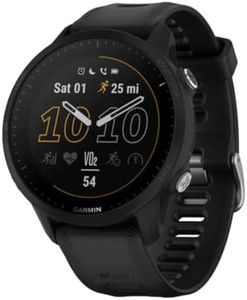
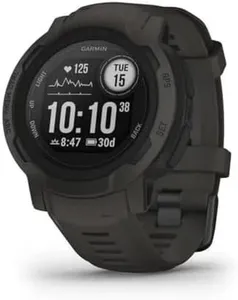
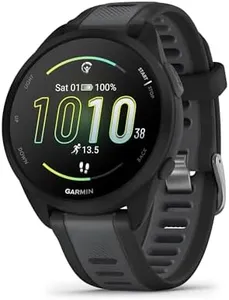
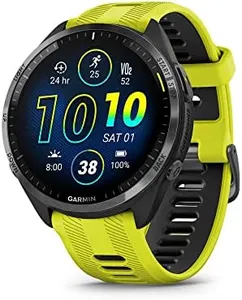
![2025 Smart Watch for Kids 6-12 [Kids GPS Tracker/Video Call] Kids Smart Watches Boys Girls, Kids Watch with GPS Tracker, School Mode, Safety Alert, GPS Tracker for Kids Smart Watch SIM Card, Black](https://images-proxy.bestreviews.guide/o-ueogFUJnbs9t0vB3DlvMFLfMQ=/0x300/https://m.media-amazon.com/images/I/416FhldLs6L._AC_CX679_.jpg)
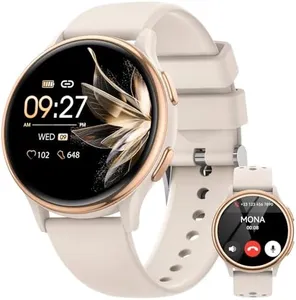
![Smart Watches for Women [Gifts for Women/Calls/Answer], 1.27" Smart Watches for Android Phones& iPhone Compatible, 24/7 Fitness Watches for Women with Heart Rate/Sleep Monitor/Steps Monitor/Pedometer](https://images-proxy.bestreviews.guide/N8BDQH2Tal46fQiYrFWcTAO4BT4=/0x300/https://m.media-amazon.com/images/I/41mmLphHDDL._AC_CX679_.jpg)
